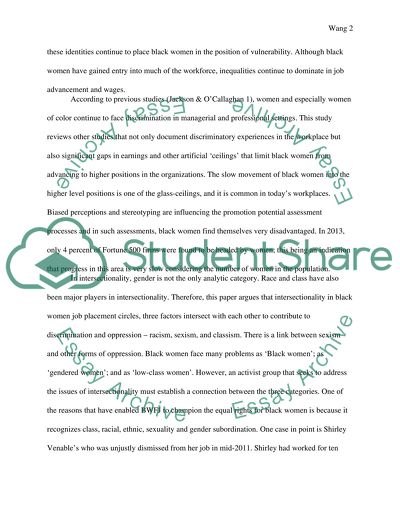Cite this document
(“Social Protest: Intersectionality and Black Women Employment Rights Essay”, n.d.)
Social Protest: Intersectionality and Black Women Employment Rights Essay. Retrieved from https://studentshare.org/sociology/1680692-black-women-are-less-likely-to-get-the-better-job-because-they-are-still-discriminated-against-in-today
Social Protest: Intersectionality and Black Women Employment Rights Essay. Retrieved from https://studentshare.org/sociology/1680692-black-women-are-less-likely-to-get-the-better-job-because-they-are-still-discriminated-against-in-today
(Social Protest: Intersectionality and Black Women Employment Rights Essay)
Social Protest: Intersectionality and Black Women Employment Rights Essay. https://studentshare.org/sociology/1680692-black-women-are-less-likely-to-get-the-better-job-because-they-are-still-discriminated-against-in-today.
Social Protest: Intersectionality and Black Women Employment Rights Essay. https://studentshare.org/sociology/1680692-black-women-are-less-likely-to-get-the-better-job-because-they-are-still-discriminated-against-in-today.
“Social Protest: Intersectionality and Black Women Employment Rights Essay”, n.d. https://studentshare.org/sociology/1680692-black-women-are-less-likely-to-get-the-better-job-because-they-are-still-discriminated-against-in-today.


